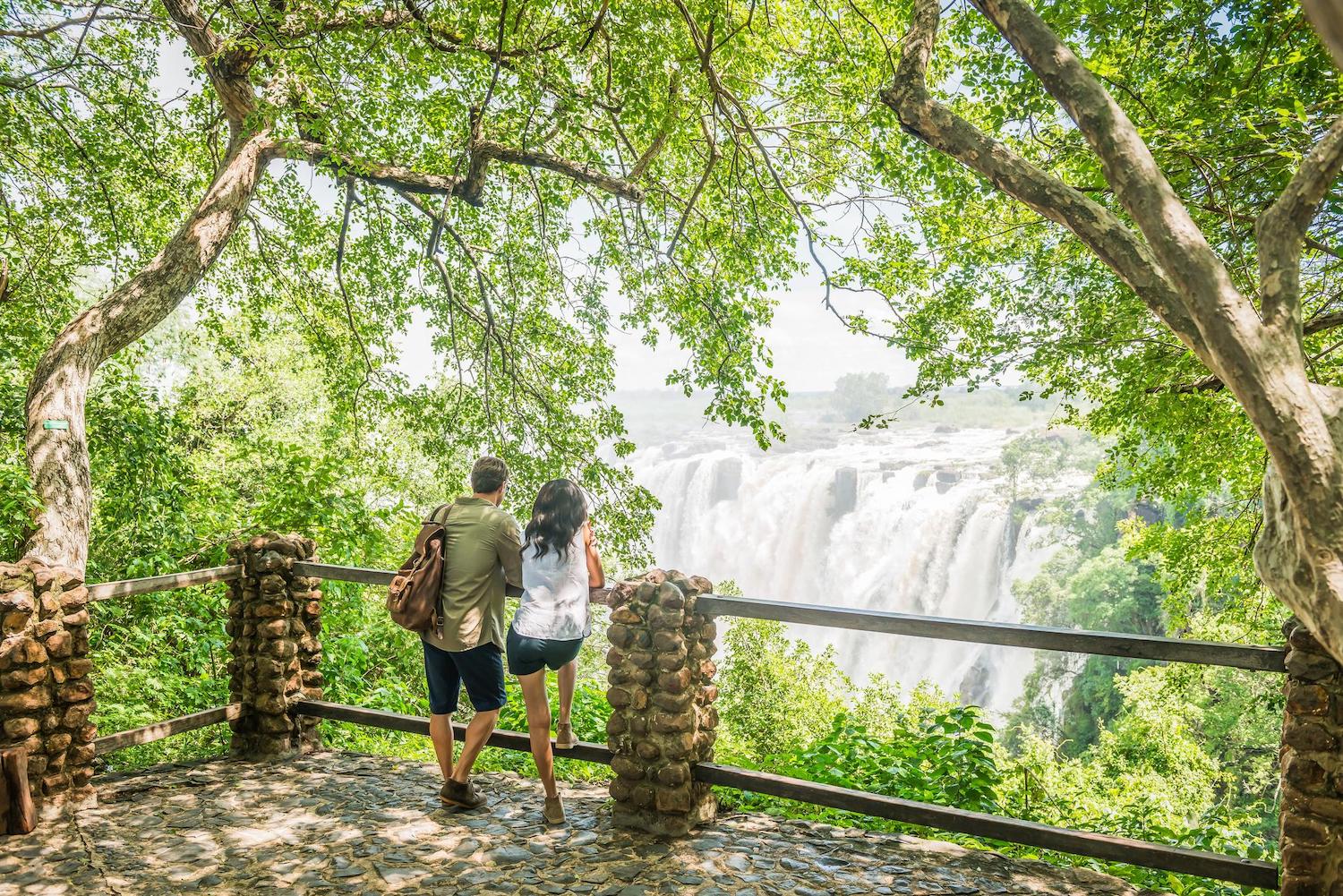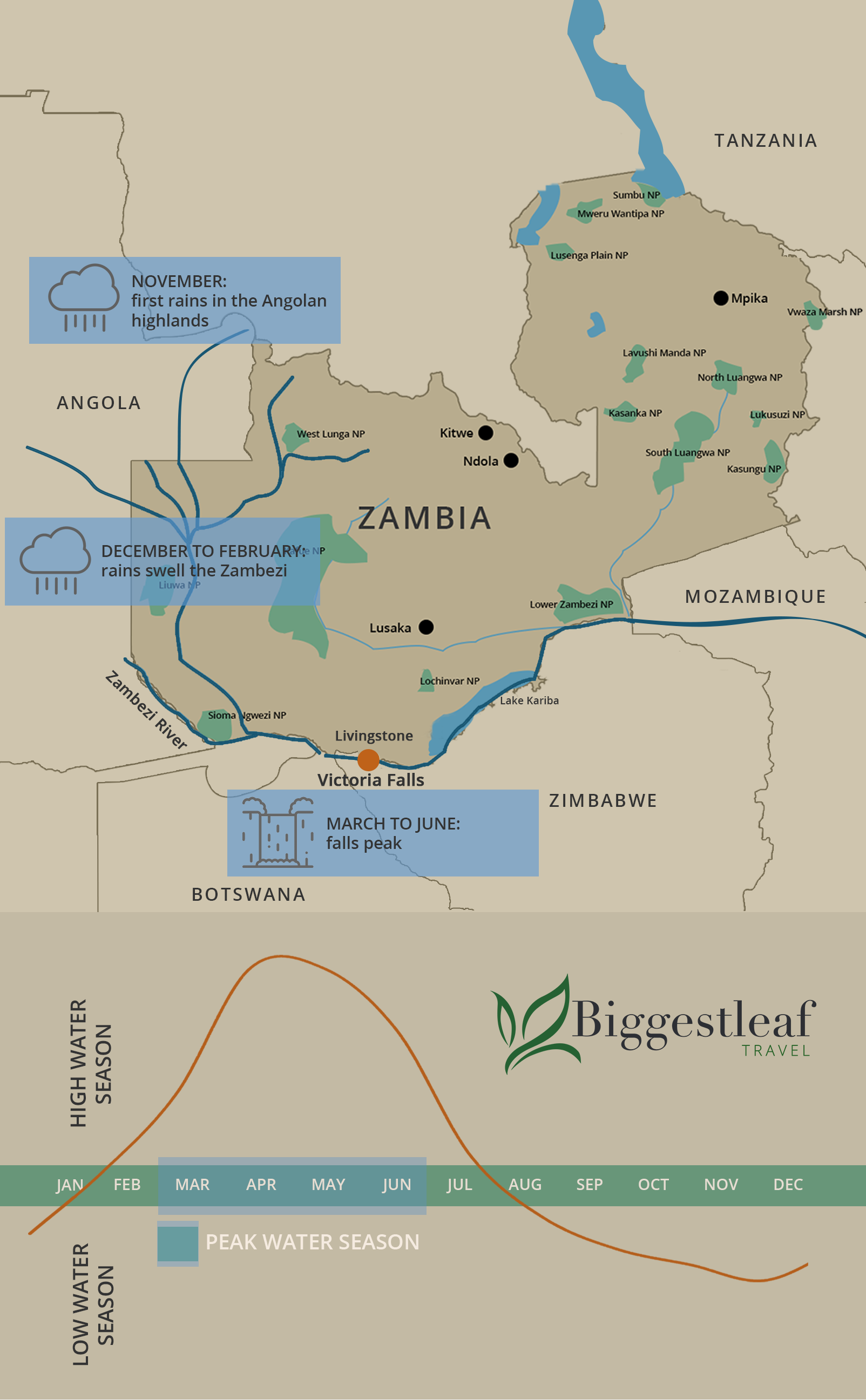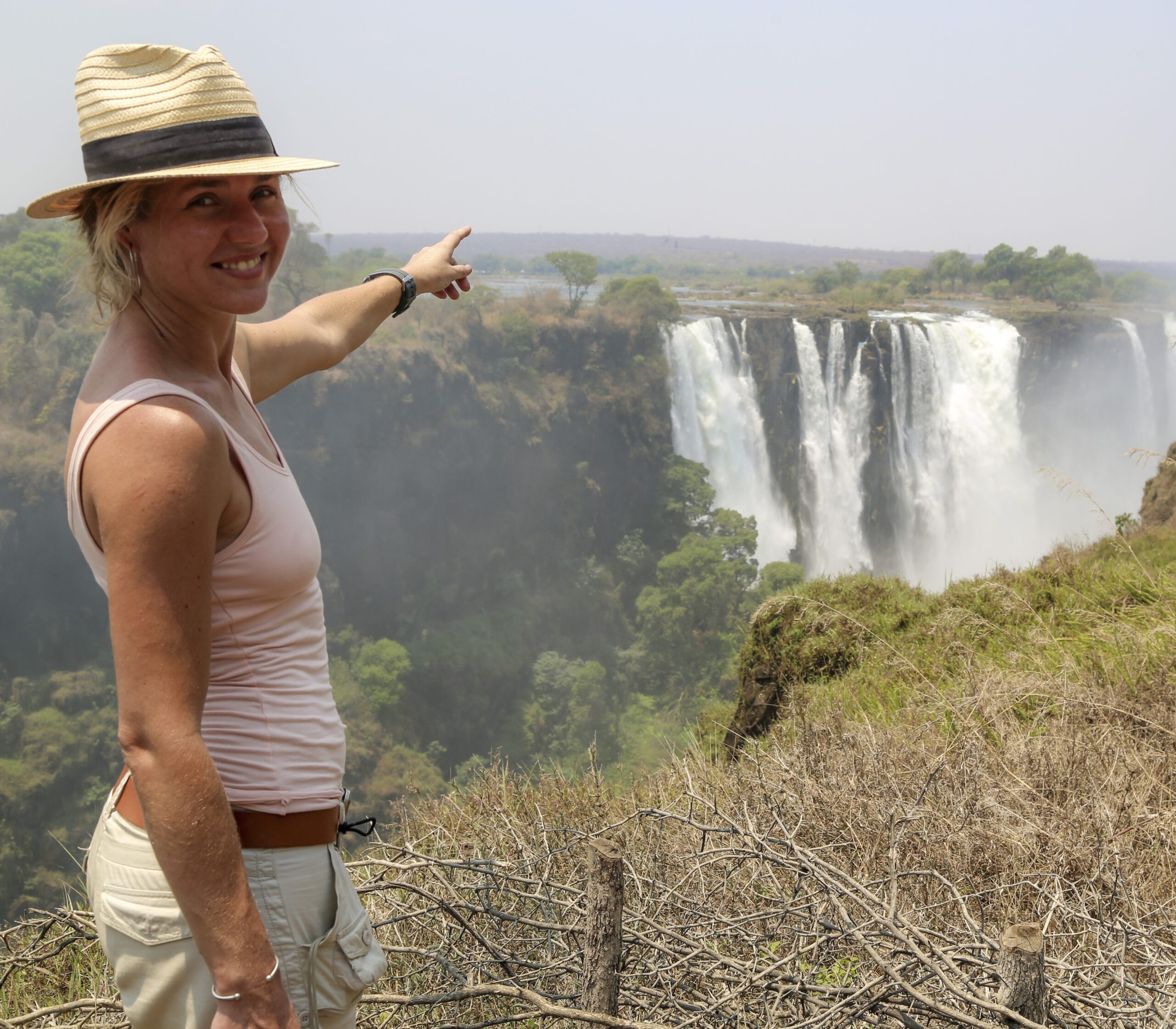HOW THE VICTORIA FALLS WORK
The Victoria Falls – traditionally known as Mosi-oa-Tunya, which means the Smoke That Thunders – is one of the world’s greatest sights. This colossal waterfall is double the height of Niagara Falls and more than half a kilometre or a third of a mile longer.
Understanding how the planet’s biggest sheet of falling water changes throughout the year will help you plan your trip.

What’s covered in this guide
Explore the highlights of this post with ease by using the table of contents below to navigate to sections of interest.
The Path of the Zambezi River
It is one of the most-visited places in Africa but in order to get the most out of your trip, it’s best to understand how the Falls ‘work’.
- The source is a small spring in the Highlands of Angola, which becomes the Zambezi River.
- The Zambezi winds its way through north-western Angola before crossing into western Zambia.
- It then takes a turn east, where it hits the rapids and cliff that make up the Victoria Falls on the border between Zambia and Zimbabwe.
- The water that crashes over the precipice fills Batoka Gorge, a series of zig-zag turns that have spectacular white-water rafting.
- The Zambezi then slows and widens to form Lake Kariba on the Zambia and Zimbabwe border, before narrowing again and passing into Mozambique.
- It eventually empties into the Indian Ocean at the Zambezi Delta.

Seasonal Ebb and Flow
Like all major natural phenomena in Africa, the Victoria Falls are determined by the rain. Just as rain triggers the trek of the wildebeest through the Serengeti-Mara ecosystem and the flooding of the Okavango Delta in Botswana, so rain ‘controls’ the height, width, depth and strength of the Falls.
- From November, summer rain begins falling across the region. If the Angolan Highlands get good showers, the source of the Zambezi slowly swells.
- Summer rains continue from December to March, and gradually the height of the spray and width of the Falls increases.
- By about April, they reach their zenith. At this point, the spray and noise can be overwhelming and visitors may not really even be able to ‘see’ the Falls because of the sheer amount of surrounding mist. Raincoats are definitely needed!
- From May, autumn arrives and the summer rains are over. The Zambezi very slowly begins slackening in time for peak safari season, which starts around July.
- Mid-year is generally considered to offer the ‘best’ views of the Falls: the spray is still high and the waters still reach all parts of the precipice but the mist is reduced.
- By October, the Falls are at their lowest. While still incredibly impressive, the cliffs on the Zambian side are generally bare rock. This continues until the summer rains replenish the river and the cycle begins all over again. October is the region’s hottest month as the long, dry season culminates in high temperatures.
High vs Low Water Seasons
Different activities are possible depending on water levels, which vary from year to year.
- High-water season generally runs to just after the summer rains start to about mid-way through dry season. This gives time for the Zambezi to swell to its maximum.
- Great high-water options include microlighting and scenic helicopter flights to truly appreciate the scale and crescendo of the Falls. Water activities are not possible because the current is too strong. A fun alternative is to try and capture a lunar rainbow. When the spray is very high, the night clear and it’s full moon, the moonlight filters through the spray, making a rare ‘moonbow’.
- Low-water season can officially open anywhere from June to August, depending on how heavy the summer rains have been. Officials declare low-water season once the current is deemed slow enough.
- At this time – which coincides with safari high season – the Falls are a hive of activity with adventure activities like: white-water rafting, boating, bungee jumping, bridge swinging and a lot more.
- One of the most-sought after activities is swimming in Devil’s Pool, a safe rocky outcrop on the Zambian side that overlooks the edge of the Falls. Demand is high as the pool is only accessible when water levels have subsided enough, from around late mid-year. Booking is essential and all visitors have defined time slots with qualified guides.
- Another exciting activity is visiting Livingstone Island. The lower levels make having an old-fashioned afternoon tea a fun experience as you are surrounded by the mighty Zambezi just as Dr David Livingstone – the first white person to see the Falls – would have been.
- Lower water levels are considered the best for anglers.

Want to know more? Click here for our expert Vic Falls safaris guide.
Want to ask a question? Enquire with us now.
PHOTO CREDITS Avani Victoria Falls Resort








